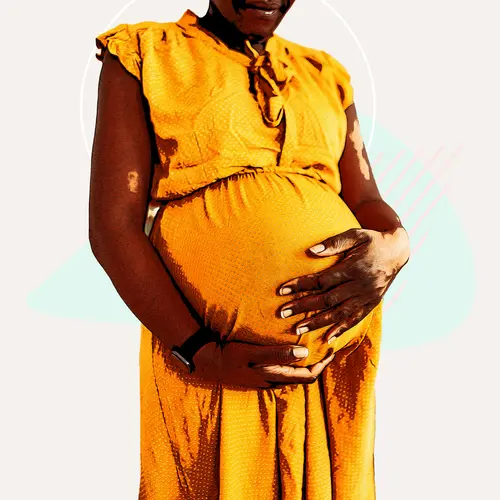When Paige Wolf of Philadelphia, Pa., started furnishing her baby's nursery, she wanted to make sure it was eco-friendly. "I spent a fortune on a sustainably made crib and dresser, but I knew it was a good investment," she says.
Like Wolf, many parents who are concerned about the health of the environment and the health of their babies are choosing to create earth-friendly nurseries. "When it comes to preparing your baby's nursery, it's important to think about not just how adorable that racecar quilt is going to look in the crib, but how that quilt will impact your child's health," says Jodi Helmer, author of The Green Year, 365 Small Things You Can Do To Make A Big Difference.
Here are some things you can do to help make your child's nursery safe for your baby and the environment.
Decorating Baby's Nursery
If your house was built before 1979, make sure to check for lead paint before sanding, scraping, or repainting. Certified inspectors and renovators can test for lead paint in your home. The U.S. Environmental Protection Agency and the National Lead Information Center can help you locate a professional in your area.
Choose paints with "zero-VOC' on the label. VOCs, or volatile organic compounds, are chemicals released during and after painting that have been linked to headaches, dizziness, irritation of the eyes, nose, and throat, and liver and kidney damage, depending on level of exposure. Or paint with clay paint, milk paint, or lime washes.
If you're buying new baby furniture for the nursery, look for items made with sustainable wood certified by the Forest Stewardship Council (FSC). It should be painted with nontoxic material, or you can buy unfinished hardwood furniture and use a water-based polyurethane sealer, suggests Helmer. Avoid pressed-wood products made with resins and glues, which often have high levels of VOCs or formaldehyde. Also avoid plastic, which will eventually end up in landfills. Or you can purchase used furniture, which will keep it out of the landfills and cut down on transportation pollution.
It's important to note that while getting things used is often better for the environment, check any used crib you may get. Older baby cribs may not meet current safety standards. Like other used baby products, it is important to check for history of recalls. Some crib models, especially cribs more than 10 years old, have been associated with suffocation, strangulation, and entrapment of babies.
Since your baby will sleep in their crib for many hours each day, consider an organic fiber mattress. Look for materials like coconut fibers, wool, or organic cotton, says Helmer. If you don't want to pay the higher cost of an organic fiber mattress and you decide to go with a non-organic, standard style mattress, make sure to put the new mattress in a well-ventilated area for a few days to let any gasses that may be in it to escape, suggests Catherine Zandonella, author of Green Guide Families. Then cover it with a non-polyvinyl chloride (non-PVC) mattress cover.
Skip the bassinet – baby really doesn't need it, they can sleep in the crib right away. If you want your baby to sleep in your room for a few months, try a Moses basket – its plant fiber construction is more environment-friendly than a plastic bassinet and it's transportable, so you can use it for travel and to move your sleeping baby around the house.
Since crawling babies spend lots of time on the floor, avoid wall-to-wall carpeting, if possible. "Any chemicals that you've brought into your home can get trapped in carpeting and released over time," says Zandonella. Instead, choose hardwood, or another sustainable wood like bamboo or cork on the floor. If you want something soft for the baby to crawl on, opt for a throw rug made with wool, cotton, or another natural material.
Children's Clothing
Whenever possible, choose children's clothing made from organic cotton, which is grown without synthetic fertilizers or pesticides and dyed with processes using berries, flowers, barks, and other plant materials. Another option: Buy used at garage sales, thrift stores, and consignment shops, where clothes have likely been washed enough to reduce any chemical residues.
For infant sleepwear, choose snug-fitting garments made of natural fabrics. Skip the fluffy frilly matching sheets, blankets, quilt, and bumper. Not only do they raise your baby's risk of SIDS, they're unnecessary and wasteful.
In Baby's Room
Instead of baby wipes, which are often made with cotton or wood pulp that's been bleached with chlorine and will clog up landfills, keep plenty of freshly laundered washcloths and a squirt bottle filled with water near your baby's diaper changing area.
Look for children's toys made from wood with nontoxic paint. Instead of using harsh cleaners, Helmer suggests this to freshen and deodorize: 2 cups water, 3 tablespoons liquid soap, 20-30 drops tea tree oil or lemon juice; Mix well, store in a spray bottle and squirt to your heart's content.


